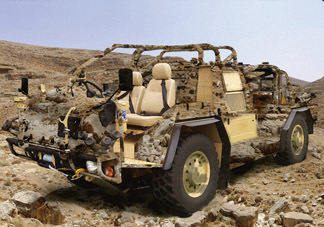Those who purchase computer-to-screen (CTS) systems are driven by a need for quality control. CTS technology removes films and other materials and processes from the stencilmaking workflow, thereby eliminating potentially costly variables from this critical prepress step. However, some of the methods used to expose CTS-imaged screens may be inappropriate—or even dangerous.
Screens imaged on inkjet-based CTS systems must be moved to a separate area for exposure (on-board exposure is available on a few models of CTS machinery). In these cases, the screen may be loaded into an exposure unit that is intended for use with film-based stencils. Unfortunately, the use of vacuum and glass are not optimal in this application, and their presence may even undermine the quality control that the CTS system is designed to enhance. And when a screen is too large for a shop’s equipment, the screenmaking staff may elect to conduct open-air exposures, which can lead to inconsistency in exposure and can pose serious safety risks to those in the area.
Douthitt designed its NOVAC screen-exposure system specifically to process CTS-imaged stencils in a controlled, enclosed unit. NOVAC comes standard with Olec’s AL 53 metal-halide lamp. The AL 53 requires 208/420-vac, 25-amp (maximum) input and supports three levels of light output: 5000 w (high), 2000/2500 w (medium), and 1000/1200 w (low). It has a lamp-head size of 26 x 10 x 10 in. (660 x 254 x 254 mm).
As an option, users may select an Olec AL 83 lamp. It requires 208/420-vac, 42-amp (maximum) input and supports three levels of light output: 8000 w (high), 3500/4000 w (medium), and 2000/2500 w (low). The AL 83 has the same lamp-head size as the AL 53. Olec lamps are designed to offer the highest resolution and high output with low energy consumption and deliver consistent quality and speed over the life of the lamp They feature servo cooling, rotary shutters, power exhaust, computer-designed reflectors, stand-by mode, and more.
Douthitt’s Magic 83 combination light integrator and digital timer controls the NOVAC system. Magic 83 is designed to maintain quality control by boosting the accuracy and consistency of the exposure system. The light integrator uses microprocessor technology and a photocell that zones in on 365- to 420-nm wavelengths to automatically compensate for variations in the exposure unit’s output, such as bulb age, reflector deterioration, and fluctuations in electrical current. The integrator/timer has memory for 10 exposure programs and can remotely control two lights or up to three intensity levels on Olec lamps.
NOVAC’s cabinet is a complete enclosure, which means no one will come in contact with UV rays during its operation. The cabinet also features an external exhaust fan for proper cooling and ventilation and to ensure temperature stability. Douthitt says the NOVAC can be built to accommodate any size screen, from those used for garments to screens for wide-format graphics. The company also offers replacement Olec lamps for the NOVAC system. For more information, contact Douthitt Corp., 245 Adair St., Detroit, MI 48207, 313-259-1565, 800-368-8448, fax 313-259-6806, e-mail: em@douthittcorp.com, Web: www.douthittcorp.com.

 Art, Ad, or Alchemy1 month ago
Art, Ad, or Alchemy1 month ago
 Case Studies1 month ago
Case Studies1 month ago
 Andy MacDougall1 month ago
Andy MacDougall1 month ago
 Editor's Note2 weeks ago
Editor's Note2 weeks ago
 Columns2 weeks ago
Columns2 weeks ago
 Thomas Trimingham2 months ago
Thomas Trimingham2 months ago
 Marshall Atkinson2 weeks ago
Marshall Atkinson2 weeks ago
 News & Trends1 month ago
News & Trends1 month ago






